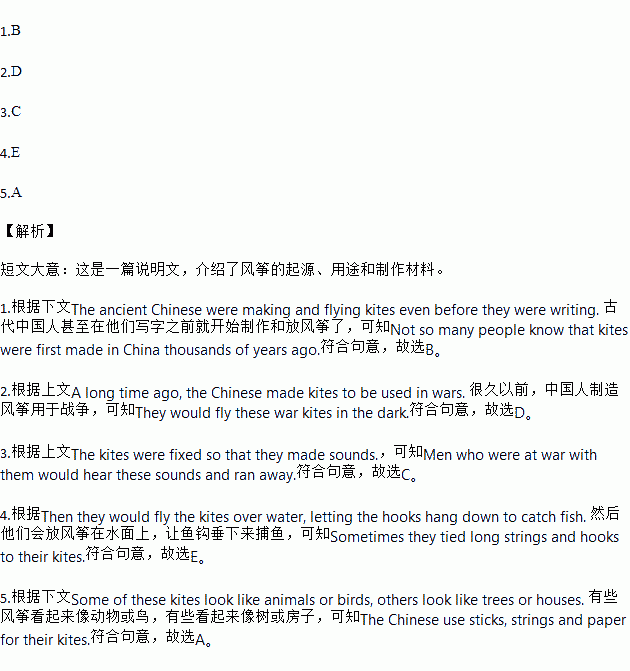题目内容
补全短文。
Most people have flown a kite or have seen one fly in strong spring wind. 1. The ancient Chinese were making and flying kites even before they were writing. A long time ago, the Chinese made kites to be used in wars. 2. The kites were fixed so that they made sounds. 3. They thought those strange sounds were made by the god in the sky. The ancient Chinese also flew kites to bring good luck and to make their crops grow rich and tall. 4. Then they would fly the kites over water, letting the hooks(钩子)hang down to catch fish. 5. Some of these kites look like animals or birds, others look like trees or houses.
A. The Chinese use sticks, strings and paper for their kites.
B. Not so many people know that kites were first made in China thousands of years ago.
C. Men who were at war with them would hear these sounds and ran away.
D. They would fly these war kites in the dark.
E. Sometimes they tied long strings(绳子)and hooks to their kites.

